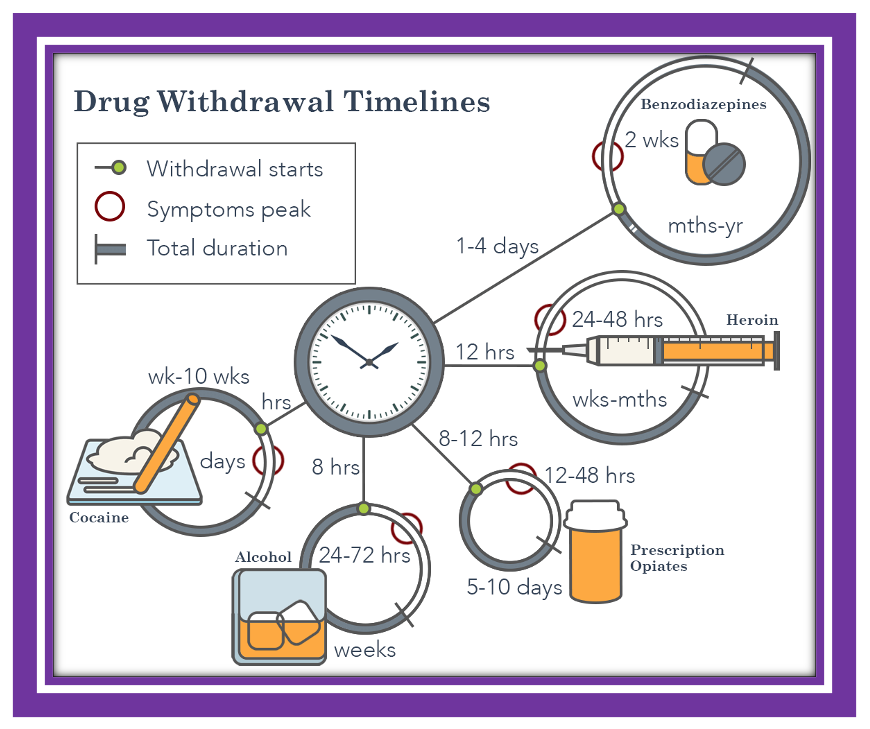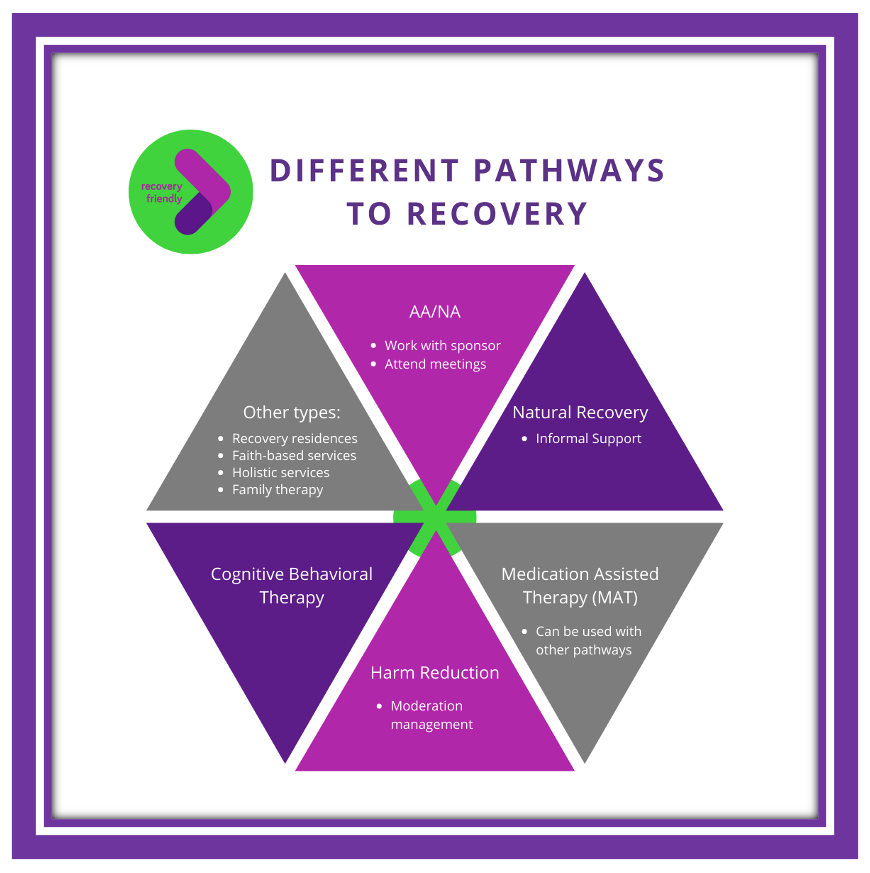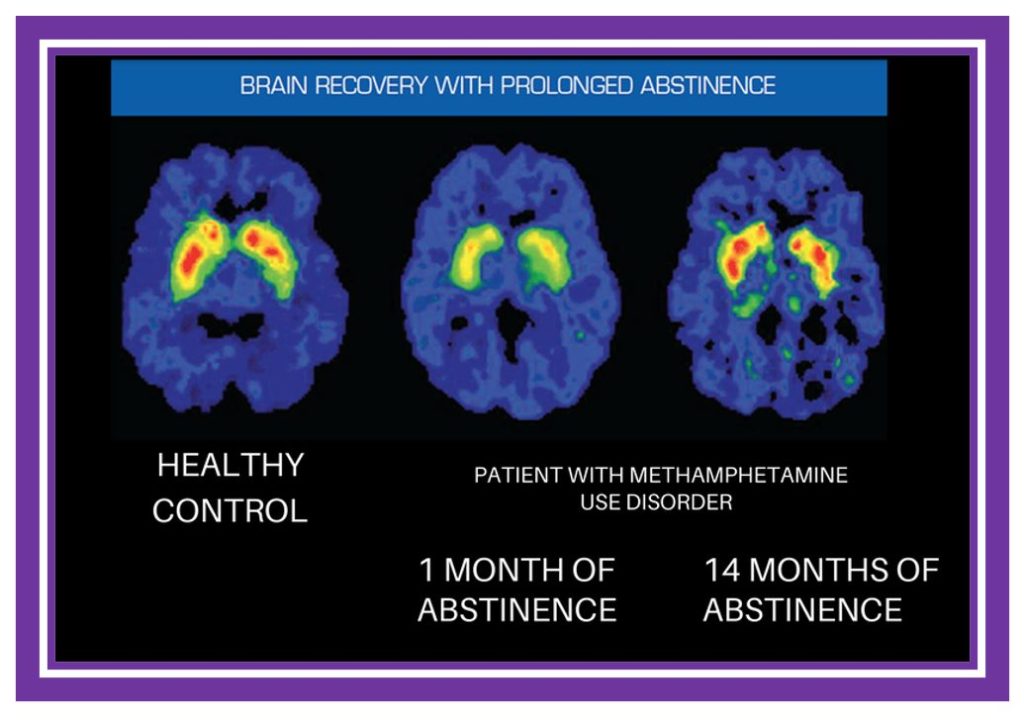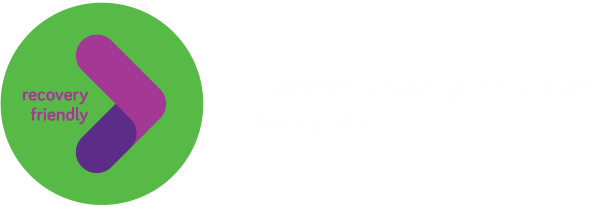
When a person decides to recover, it is not an easy process. Like any chronic disease, one must be deliberate and strong to create a new normal that benefits their life.
“Drug withdrawal is a physiological response to the sudden quitting or slowing of use of a substance to which the body has grown dependent on” (Sharp et al, 2022). Withdrawal symptoms can be any combination of increased blood pressure, increased heart rate, anxiety, irritability, tremors, nausea, vomiting, diarrhea, body aches, substance craving, seizures, and hallucinations (Sharp et al, 2022). Below is a table taken from American Addiction Centers showing withdrawal timelines for different substances (Sharp et al, 2022). Because withdrawal can be a scary and potentially long process, medical assisted interventions are available (Sharp et al, 2022).

Recovery can begin after the withdrawal phase ends. Recovery can look different for everyone. Below are the different pathways to recovery. These pathways sometimes intersect.

Some people wonder about recovery. Will my brain be balanced again? The image below shows how a brain begins to return to normal functioning after 14 months of methamphetamine recovery (RRI, n.d.). Throughout the first year of recovery, progress can be seen monthly. After a year in recovery, the brain will strengthen. The above interventions are especially useful during this process.
Research is also showing that physical exercise can improve the brain’s neuroplasticity, executive control, cerebral blood flow, white matter integrity and overall brain health for those with SUD (RRI, n.d.).

Recovery from Substance Use Disorder is a long and unique journey that is different for each person who has experienced it. No one is alone and there is hope.

References:
ACEs Aware. (2022). The Science of ACEs and Toxic Stress. Retrieved from
The Science of ACEs & Toxic Stress | ACEs Aware – Take action. Save lives.
Centers of Disease Control and Prevention – CDC. (2021, April 6). Preventing Adverse Childhood Experiences. Retrieved from
Preventing Adverse Childhood Experiences |Violence Prevention|Injury Center|CDC
National Institutes on Drug Abuse – NIDA. (2020a, July). Drugs and the Brain. Retrieved from
https://nida.nih.gov/publications/drugs-brains-behavior-science-addiction/drugs-brain
National Institutes on Drug Abuse – NIDA. (2020b, July). Preventing Drug Misuse and Addiction: The Best Strategy. Retrieved from
National Institutes on Drug Abuse – NIDA. (2019, August). Genetics and Epigenetics of Addiction
DrugFacts. Retrieved from Genetics and Epigenetics of Addiction DrugFacts | National Institute on Drug Abuse (NIDA) (nih.gov)
Recovery Research Institute – RRI. (n.d.). The Brain in Recovery: The neuroscience of addiction recovery.
Retrieved from The Brain in Recovery – Recovery Research Institute (recoveryanswers.org)
Sharp, A., Lautieri, A., Thomas, S. (2022, February 25). Drug Withdrawal Symptoms, Timelines and Treatment. American Addiction Centers.
Retrieved from Drug Withdrawal Symptoms, Timelines, and Treatment (americanaddictioncenters.org)
Shatterproof. (2022a). Just Five: Are You at Risk. Retrieved from
Are You at Risk? – Recovery Friendly Missouri (justfive.org)
Shatterproof. (2022b). Just Five: The Science of Addiction. Retrieved from
The Science of Addiction – Recovery Friendly Missouri (justfive.org)

